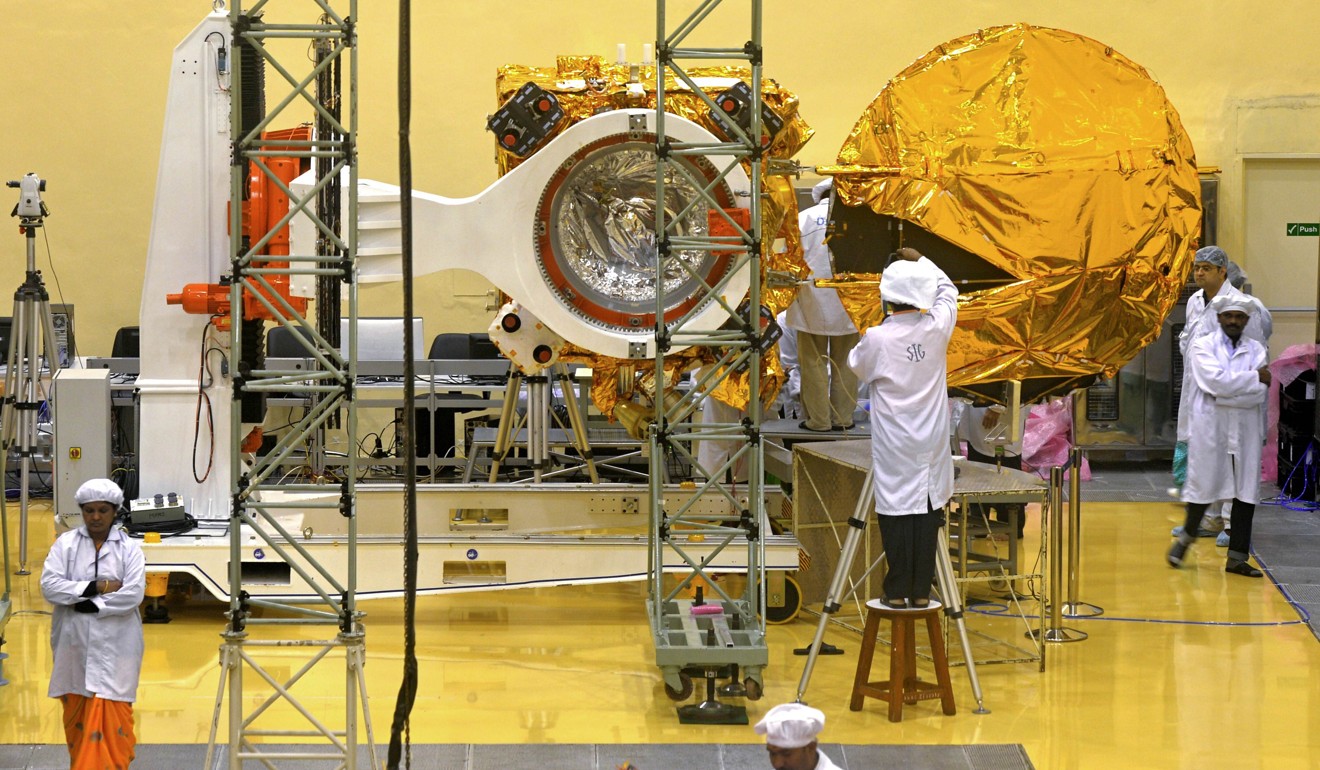
‘The nation is proud’: India shows off space prowess by launching its first mega rocket
India is vying for a larger slice of the booming commercial satellite business as phone, internet and other companies seek expanded and more high-end communications networks
India has successfully launched its most powerful home-produced rocket, another milestone for its indigenous space programme which one day hopes to put a human into orbit.
The 43-metre rocket hurtled into a clear sky at 5.28pm from the southern island of Sriharikota, one of two sites used by the Indian Space Research Organisation (ISRO) to launch satellites. Scientists hugged each other and cheered as the 640-tonne rocket lifted off.
“The GSLV - MKIII D1/GSAT-19 mission takes India closer to the next generation launch vehicle and satellite capability,” Prime Minister Narendra Modi posted on his Twitter account. “The nation is proud!”
The rocket boasts a powerful engine that has been developed in India over many years. Programme managers hope to reduce reliance on European engines that have propelled some of India’s spacecraft in the past.
This is an important moment in India’s space technology, to launch an indigenous heavy rocket
The GSLV Mk III rocket carried a satellite weighing more than three tonnes into a high orbit above Earth, a landmark achievement after India had struggled to match the heavier payloads of other space giants.
“This is an important moment in India’s space technology, to launch an indigenous heavy rocket,” said Ajay Lele, from the Delhi-based Institute for Defence Studies and Analyses.
“Communication satellites are quite heavy and we were [only] able to send up to two tonnes previously. This is a double quantum jump for India.”
The launch is another feather in the cap for scientists at ISRO, who won Asia’s race to Mars in 2014 when an Indian spacecraft reached the Red Planet on a shoestring budget.
That achievement burnished India’s reputation as a reliable low-cost option for space exploration, with its US$73 million price tag drastically undercutting Nasa’s Maven Mars US$671 million mission.
India is vying for a larger slice of the booming commercial satellite business as phone, internet and other companies seek expanded and more high-end communications networks.
In February, India put a record 104 satellites in orbit from a single rocket, surpassing Russia, which launched 39 satellites in one mission in June 2014.
The rocket’s main cargo on that occasion was a 714kg satellite for Earth observation, but it was also loaded with 103 smaller “nano satellites”, nearly all from other countries.

Although India has successfully launched lighter satellites in recent years, this latest rocket is capable of carrying a massive four-tonne payload into high orbit – twice the capacity of its predecessor, ISRO claims.
The space agency tested a less-developed version of the rocket in December 2014 while the cryogenic engine was still in the testing phase.
It carried an unmanned crew capsule which separated from the rocket and splashed down in the Bay of Bengal off India’s east coast 20 minutes after lift-off.
The Indian-made capsule was designed to carry up to three astronauts, but ISRO said it would take at least another seven years to reach the point where a crew could be put into space.
India wants to become the fourth nation – following in the footsteps of Russia, the US and China – to put astronauts into orbit, but its manned space flight programme has experienced multiple stops and starts.
A 2015 Space Foundation report pegged the global space industry at US$323 billion.
Additional reporting by Reuters

.png?itok=arIb17P0)